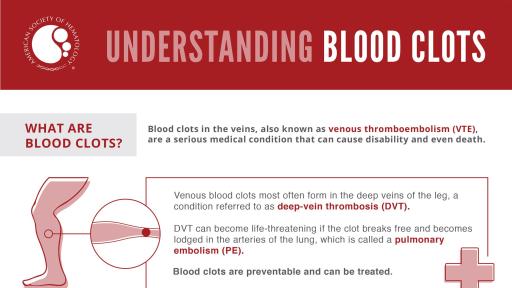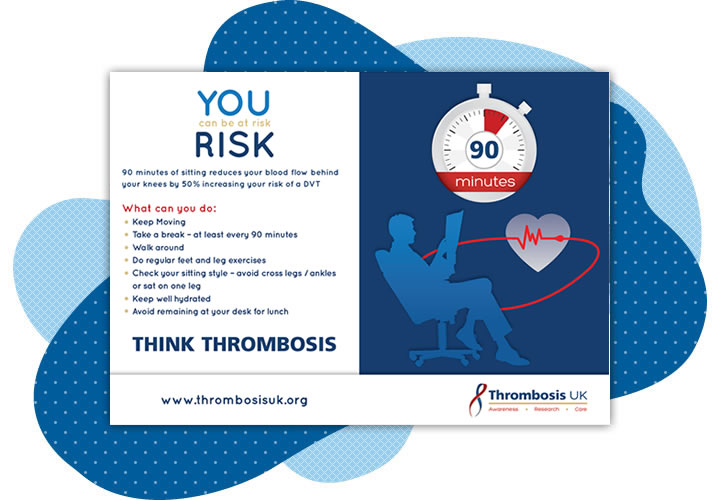Uncover the silent threat lurking in your body and discover 10 powerful strategies to prevent and combat Deep Vein Thrombosis.
Table of Contents
- Introduction to Deep Vein Thrombosis
- Understanding Deep Vein Thrombosis
- Signs and Symptoms of DVT
- Who’s at Risk?
- Tackling DVT with Lifestyle Changes
- The Role of Diet in DVT Prevention
- Importance of Movement
- Medicinal Approaches to DVT
- What Is Compression Therapy?
- Professional Care and Support
- Conclusion
- FAQs
Introduction to Deep Vein Thrombosis
In our bodies, a complex system of blood vessels carries blood to every part, ensuring we stay healthy and strong. However, sometimes, a condition called deep vein thrombosis can occur, leading to potential health risks that we need to understand. Deep vein thrombosis, often referred to as DVT for short, is a critical issue connected with blood clots.
Understanding deep vein thrombosis is crucial because it can have serious consequences on our health. By learning about this condition, we can take steps to prevent it and keep our bodies safe. Let’s explore more about deep vein thrombosis and how it relates to blood clots.
Understanding Deep Vein Thrombosis
Deep vein thrombosis, also known as DVT, is a medical condition where blood clots form in veins deep inside your body. These blood clots can be dangerous because they can break loose and travel to important organs like your lungs, causing serious health problems.
What Happens in Your Body
Imagine your veins as tiny tubes that carry blood back to your heart. When something like a blood clot forms inside these tubes, it can block the flow of blood and cause problems. Deep vein thrombosis happens when this clot forms in the deeper veins of your body.
Where and When It Happens
DVT usually takes place in the legs, where blood flow might be slower due to sitting or lying down for long periods, like during a long car ride or plane trip. It can also happen when you’re sick and not moving around as much as usual.
Signs and Symptoms of DVT
Deep vein thrombosis, commonly known as DVT, can sometimes show subtle signs that may indicate a blood clot in your body. It’s essential to be aware of these symptoms to seek medical help promptly if needed.

Image courtesy of www.facebook.com via Google Images
Leg Pain and Swelling
One of the most noticeable signs of DVT is pain or tenderness in one of your legs. This pain may feel like cramping or soreness, and the affected leg might also swell up. If you experience these symptoms, especially if they worsen when you stand or walk, it’s essential to consult a doctor.
Warmth and Redness
Another indicator of DVT is the warmth and redness of the skin over the affected area. If you notice that a specific area on your leg feels warmer than usual or looks redder, it could be a sign of a blood clot. Don’t ignore these changes and seek medical help promptly.
Sudden Shortness of Breath
In some cases, a blood clot from DVT can break off and travel to your lungs, causing a life-threatening condition called pulmonary embolism. If you experience sudden shortness of breath, chest pain that gets worse with breathing, or coughing up blood, seek immediate medical attention as it could be a sign of a severe complication from DVT.
Being aware of these signs and symptoms can help you or someone else recognize the potential presence of DVT early on. If you notice any of these indications, do not hesitate to seek medical help to receive proper diagnosis and treatment.
Who’s at Risk?
In understanding the risks associated with deep vein thrombosis, it’s essential to recognize the factors and conditions that can increase the likelihood of developing this condition. Some people are more prone to experiencing DVT due to specific reasons.
Age and Inactivity
Age can play a role in the risk of developing deep vein thrombosis. Older individuals, especially those over 60, are more susceptible to blood clots forming in their veins. Additionally, leading a sedentary lifestyle, where you sit for extended periods without much movement, can also increase the chances of DVT.
Surgery and Hospitalization
Undergoing surgery, particularly operations that involve the legs, hips, or abdomen, can raise the risk of developing blood clots. Hospitalization, which may require prolonged bed rest, can also contribute to the formation of deep vein thrombosis.
Genetic Factors
In some cases, genetic factors can predispose individuals to blood clotting disorders, making them more prone to conditions like DVT. If someone in your family has a history of blood clots, it’s essential to be aware of this inherited risk.
Medical Conditions
Certain medical conditions, such as cancer, heart disease, and lung disease, can increase the risk of developing deep vein thrombosis. These conditions may affect blood flow or the body’s ability to clot properly, making blood clots more likely to form.
By understanding who is at risk of deep vein thrombosis, we can take steps to prevent the condition and ensure better overall health and well-being.
Tackling DVT with Lifestyle Changes
When it comes to preventing deep vein thrombosis, there are simple lifestyle changes that can make a big difference in reducing your risk. By incorporating these changes into your daily routine, you can help keep your veins healthy and blood flowing smoothly.

Image courtesy of www.linkedin.com via Google Images
DVT Prevention Through Daily Habits
One of the easiest ways to prevent DVT is by staying active. Regular movement, such as walking, biking, or playing sports, can help improve blood circulation in your body. Try to incorporate at least 30 minutes of physical activity into your day to keep your veins healthy and reduce the risk of blood clots.
Importance of Hydration
Drinking plenty of water is essential for maintaining good blood flow and preventing dehydration, which can contribute to the development of blood clots. Make sure to stay hydrated throughout the day by drinking water regularly and avoiding sugary drinks that can have negative effects on your veins.
Healthy Eating Habits
What you eat can also play a significant role in preventing DVT. A diet rich in fruits, vegetables, whole grains, and lean proteins can help maintain a healthy weight and reduce the risk of developing blood clots. Try to limit foods high in saturated fats, salt, and sugar, as these can contribute to poor circulation and vein health.
By making these simple lifestyle changes, you can take proactive steps to reduce your risk of deep vein thrombosis and keep your veins healthy and strong.
The Role of Diet in DVT Prevention
When it comes to preventing Deep Vein Thrombosis, it’s important to think about what we eat. Believe it or not, our diet can play a significant role in reducing the risk of developing blood clots in our veins.
How Diet Affects DVT Risk
Certain foods can either help or harm our blood vessels. Eating a diet rich in fruits, vegetables, whole grains, and lean proteins can provide essential nutrients that support healthy blood circulation. On the other hand, consuming too much unhealthy fats, salt, and sugar can increase inflammation in the body, which might contribute to blood clot formation.
Hydration and DVT Prevention
Staying well-hydrated is vital for maintaining good blood flow. Dehydration can make our blood thicker, making it more likely to form clots. Drinking plenty of water throughout the day can help keep our blood at the right consistency to prevent clotting.
| Methods | Benefits | Considerations |
|---|---|---|
| Compression Stockings | Prevents blood clots by increasing circulation | May be uncomfortable for some individuals |
| Anticoagulant Medications | Helps prevent blood clots from forming | Can increase risk of bleeding |
| Regular Exercise | Improves circulation and reduces risk of blood clots | Consult a healthcare professional before starting an exercise regimen |
Healthy Eating Habits to Reduce DVT Risk
In addition to watching what we eat, it’s also important to practice healthy eating habits. Eating regular, balanced meals, avoiding excessive snacking on unhealthy foods, and controlling portion sizes can all contribute to better overall health and lower the risk of developing Deep Vein Thrombosis.
Importance of Movement
Staying active and moving your body is incredibly important when it comes to preventing deep vein thrombosis. Movement helps to keep the blood flowing smoothly through your veins, reducing the risk of blood clots forming.

Image courtesy of www.multivu.com via Google Images
Why Movement Matters
When you sit or stand still for long periods, like when watching TV or playing video games, the blood in your veins can slow down and pool in one spot. This stagnant blood can become sticky and form clots, which can then travel to other parts of your body, causing serious problems like DVT.
How to Stay Active
To prevent DVT, it’s essential to keep moving throughout the day. You can go for a walk, play outside, ride your bike, or dance to your favorite song. Simple activities like these help your muscles squeeze the veins and push the blood back to your heart, keeping it from sitting still too long.
Medicinal Approaches to DVT
When it comes to treating and preventing Deep Vein Thrombosis (DVT), doctors may recommend using anticoagulants. These medications work by preventing blood clots from forming in your veins.
What Are Anticoagulants?
Anticoagulants, also known as blood thinners, are drugs that help to slow down the body’s process of making clots. By making your blood less likely to clot, anticoagulants can reduce the risk of developing DVT and prevent existing blood clots from getting bigger.
How Do Anticoagulants Help with DVT?
Anticoagulants are prescribed for both the treatment and prevention of DVT. If you have been diagnosed with DVT, your doctor may recommend taking anticoagulants to stop the blood clot from growing larger and to prevent new clots from forming. These medications can also help reduce the risk of dangerous complications such as a pulmonary embolism, which is when a blood clot travels to the lungs.
It’s essential to take anticoagulants exactly as prescribed by your healthcare provider. Missing doses or taking too much can be dangerous, so always follow your doctor’s instructions carefully.
Anticoagulants are usually taken for a specified period of time, depending on the severity of the DVT and your individual risk factors. Your doctor will monitor your progress and may adjust your dosage as needed.
What Is Compression Therapy?
Compression therapy is a treatment method used to manage and prevent conditions like deep vein thrombosis (DVT). It involves using specialized garments or devices to apply pressure to the limbs, encouraging proper circulation and reducing the risk of blood clots.

Image courtesy of thrombosisuk.org via Google Images
How Does Compression Therapy Work?
When you wear compression garments, they squeeze gently on your legs, ankles, or arms. This pressure helps the blood vessels work better by promoting the flow of blood back to the heart. By improving circulation, compression therapy can reduce swelling, prevent blood from pooling in the veins, and lower the chances of clots forming.
Why Is Compression Therapy Important for DVT?
For people at risk of DVT, such as those with poor circulation or who have recently had surgery, compression therapy can be crucial. By wearing compression stockings or sleeves, they can greatly reduce the likelihood of developing blood clots that could lead to serious health issues.
Compression therapy is safe, non-invasive, and often recommended as part of a comprehensive approach to managing and preventing DVT. It’s a simple yet effective way to support your circulatory system and keep your veins healthy.
Professional Care and Support
When you suspect you might have deep vein thrombosis or if you have been diagnosed with it, it is essential to seek medical advice promptly. Doctors and healthcare professionals have the knowledge and tools to help you manage this condition effectively.
Seeking Medical Advice
If you experience symptoms like swelling, pain, or redness in your legs or arms that could indicate deep vein thrombosis, don’t hesitate to talk to a grown-up or seek medical help. This is especially important if you have risk factors like a family history of blood clots or if you have recently been inactive for a long period.
Types of Professional Treatments
Doctors may recommend anticoagulants, which are medicines that help prevent the formation of blood clots and keep existing clots from getting bigger. These medications are essential in treating DVT and reducing the risk of complications such as pulmonary embolism.
Your healthcare provider may also suggest procedures like thrombolysis, where medications are used to dissolve blood clots, or insertion of a filter into a major vein to prevent clots from traveling to your lungs. These interventions are performed by skilled professionals and are done to safeguard your health.
Understanding that you are in good hands with healthcare experts who have your best interests at heart can bring comfort and reassurance during a challenging time. Remember, it’s okay to ask questions and seek guidance from your healthcare team to better grasp your condition and treatment options.
Conclusion
Deep Vein Thrombosis, also known as DVT, is a serious medical condition that involves the formation of blood clots in the deep veins of the body. It is crucial to understand the risks, signs, and symptoms of DVT to prevent complications. By being aware of lifestyle changes, diet adjustments, and the importance of movement, we can take steps towards reducing the chances of developing DVT.

Image courtesy of www.facebook.com via Google Images
Prevention is key when it comes to tackling DVT. By making simple changes in our daily routines and seeking medical advice when needed, we can protect ourselves from the risks associated with this condition. Anticoagulants and compression therapy are tools that professionals may use to treat DVT and prevent it from worsening.
It’s essential to remember that while DVT can be a serious condition, there are ways to manage it effectively with the right knowledge and support. By staying informed, recognizing the signs, and taking proactive steps towards prevention, we can safeguard ourselves and others from the dangers of deep vein thrombosis.
FAQs
Can Kids Get DVT Too?
DVT is more common in adults, especially in older individuals. It’s essential for kids to know about it, but the chances of getting DVT as a child are very rare. However, it’s still good to understand what it is in case you come across it in the future.
Is DVT Scary?
DVT is a serious condition, but it’s not something to be terrified of. By learning about it, recognizing the signs, and seeking help early, it can be managed effectively. Knowledge is power in dealing with health issues like DVT.
What Can I Do To Help Prevent DVT?
To help prevent DVT, keep moving! Go outside, play sports, or simply take a walk. Sitting for long periods can increase the risk of blood clots, so staying active is crucial. Also, drinking plenty of water and eating healthily can also contribute to preventing DVT.





